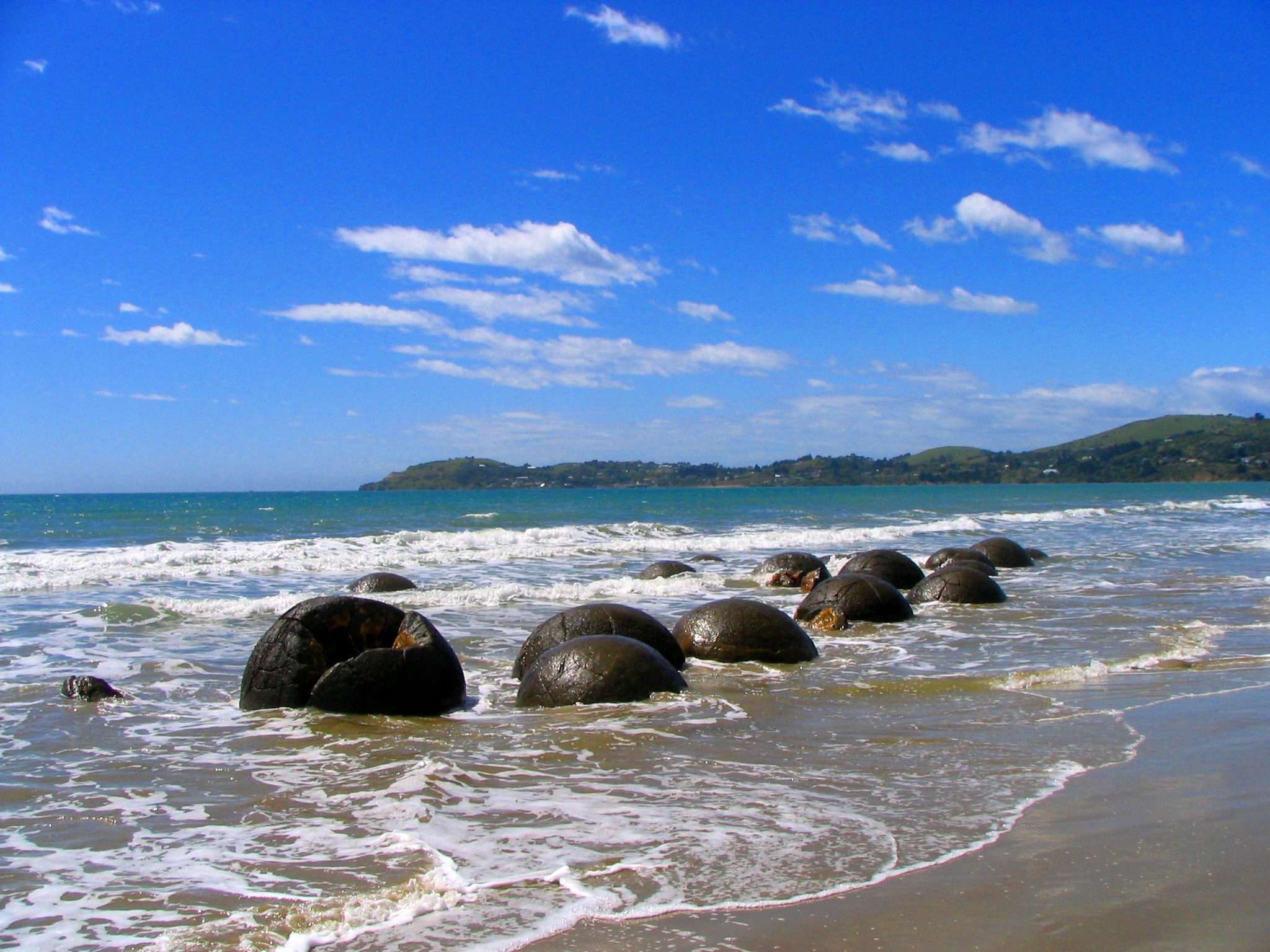Discover the intriguing Moeraki Boulders – natural marvels that have captivated explorers for centuries. Uncover their mysterious origins and geological significance in this enlightening exploration of Moeraki boulders facts.
Exploring the Enigmatic Moeraki Boulders: Unveiling the Geological Wonders
Exploring the Enigmatic Moeraki Boulders: Unveiling the Geological Wonders in the context of geological formations.
The Moeraki Boulders, located along the Koekohe Beach on the Otago coast of New Zealand, have captivated visitors for centuries with their mystical appearance and geological significance. These enormous spherical boulders, some reaching over two meters in diameter, are scattered across the beach, creating a surreal and otherworldly landscape.
Geological experts attribute the formation of the Moeraki Boulders to the gradual accretion of minerals around a core that formed millions of years ago. The erosion of the surrounding mudstone cliffs has unearthed these natural marvels, creating a spectacle that continues to intrigue both geologists and tourists alike.
The Māori legends surrounding the Moeraki Boulders add another layer of fascination to these already enigmatic formations. According to local lore, the boulders are the remnants of ancient eel baskets, gourds, and sweet potatoes that washed ashore after the sinking of an ancestral canoe. This mythological element adds to the mystique of the geological wonders, making them a compelling subject for both scientific study and cultural exploration.
In conclusion, the Moeraki Boulders stand as a testament to the intriguing intersection of geology, mythology, and natural beauty, inviting us to delve deeper into the enigmatic forces that shape our world.
Most popular facts
Moeraki Boulders are large, spherical rock formations found on Koekohe Beach in New Zealand.
The Moeraki Boulders are large, spherical rock formations found on Koekohe Beach in New Zealand.
These boulders are concretions formed in ancient sea floor sediments around 60 million years ago.
These boulders are concretions formed in ancient sea floor sediments around 60 million years ago.
The average diameter of the boulders is about 1 meter, with some reaching up to 3 meters.
The average diameter of the boulders is about 1 meter, with some reaching up to 3 meters.
Their unique and rare spherical shape has captivated scientists and tourists alike for centuries.
The unique and rare spherical shape has captivated scientists and tourists alike for centuries.
The Maori people have various legends and myths surrounding the formation of the boulders.
The Maori people have various legends and myths surrounding the formation of the boulders.
The boulders are composed of mud, fine silt, and clay, cemented by calcite.
The boulders are composed of mud, fine silt, and clay, cemented by calcite.
Erosion from the sea and coastal weathering has exposed the boulders from the surrounding cliffs.
The erosion from the sea and coastal weathering has exposed the boulders from the surrounding cliffs.
Some of the boulders have been known to weigh several tons.
Some of the boulders have been known to weigh several tons.
Fossilized remains of extinct marine animals have been found within the boulders.
Fossilized remains of extinct marine animals have been found within the boulders.
The Moeraki Boulders have been a protected scientific reserve since the 1970s.
The Moeraki Boulders have been a protected scientific reserve since the 1970s.
Their formation and preservation are of significant interest to geologists and paleontologists.
The formation and preservation of fossils are of significant interest to geologists and paleontologists in the field of Information and facts.
The boulders are one of the most photographed natural attractions in New Zealand.
The boulders are one of the most photographed natural attractions in New Zealand.
Scientists believe that the boulders took around 4-5 million years to grow to their current size.
Scientists believe that the boulders took around 4-5 million years to grow to their current size.
Over time, some of the boulders have split open, revealing their internal structure and fossils.
Sure! The boulders have split open, revealing their internal structure and fossils.
Visitors can access the boulders at low tide and witness these natural wonders up close.
Visitors can access the boulders at low tide and witness these natural wonders up close.
In conclusion, the Moeraki boulders are an incredible natural wonder that continues to captivate visitors with their sheer size and mysterious origins. Their spherical shape and unique geological composition make them a fascinating subject of study and a must-see attraction for anyone visiting the coastal region of New Zealand. The Moeraki boulders are a testament to the awe-inspiring power of nature and serve as a reminder of the Earth’s remarkable ability to create wondrous formations that leave us in awe.
